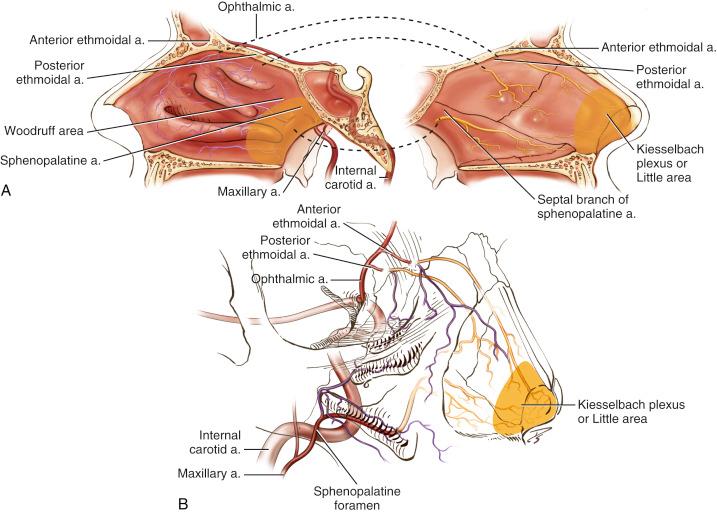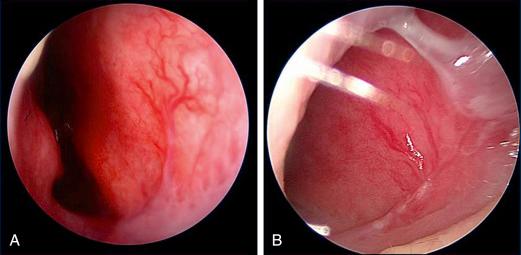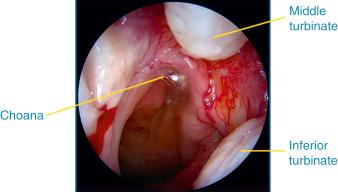Physical Address
304 North Cardinal St.
Dorchester Center, MA 02124
Epistaxis is one of the most common otolaryngologic emergencies.
Minor epistaxis usually originates from the anterior nasal septum and is often satisfactorily treated with direct pressure or anterior nasal packing.
Epistaxis that is not controlled by adequate anterior nasal packing can be pragmatically defined as posterior epistaxis. Refractory posterior epistaxis is continued hemorrhage that occurs despite placement of anteroposterior nasal packing or shortly after its removal.
Traditionally, the initial management of posterior epistaxis involved placement of anteroposterior nasal packing and inpatient observation. This procedure, however, is associated with significant morbidity. This has led to earlier intervention with a variety of means, including transarterial embolization, internal maxillary artery ligation, anterior ethmoid artery ligation, and endoscopic sphenopalatine artery (SPA) ligation.
Embolization is a nonsurgical option to controlling epistaxis. It may not be available in many institutions and is typically more costly than endoscopic surgical control.
Transantral internal maxillary artery ligation through a Caldwell-Luc antrostomy is relatively straightforward but is now rarely performed since there is decreased morbidity and increased effectiveness with surgical ligation of the SPA and the anterior ethmoid artery.
Anterior ethmoid artery ligation via an external (or even an endoscopic) approach can be performed as an adjunct to SPA ligation. Vascular supply to the nasal mucosa from this branch of the internal carotid artery is usually of secondary importance.
Endoscopic SPA ligation was first described in 1992. As rigid endoscopes have become increasingly available, this technique has been refined to require minimal dissection. Because the endoscopic technique provides excellent visualization and is associated with low morbidity, it is now the first-line surgical treatment for refractory posterior epistaxis.
SPA ligation is not intended for the treatment of epistaxis associated with the use of anticoagulants and antiplatelet drugs. Patients with this type of epistaxis are better treated with limited cauterization and placement of resorbable hemostatic packing materials.
SPA ligation is also unlikely to provide long-term improvement in epistaxis associated with hereditary hemorrhagic telangiectasia.
The lateral nasal wall is supplied by the SPA as well as the anterior and posterior ethmoid arteries ( Fig. 3.1A and Fig. 3.1B ).

The SPA, a terminal branch of the internal maxillary artery (IMA) from the external carotid artery, supplies blood to up to 90% of the nasal mucosa.
The anterior and posterior ethmoid arteries, branches of the ophthalmic artery from the internal carotid artery, also contribute significantly to nasal blood flow.
The anterior ethmoid artery is larger than the posterior ethmoid artery and is more clinically significant. It is the major blood supply to the anterior third of both the septum and lateral nasal wall.
The posterior ethmoid artery supplies a small area on the superior concha and adjacent septum.
The labial artery, a branch of the facial artery, also supplies the nasal vestibule. In addition, branches of the greater palatine artery supply the inferior anterior septum.
The SPA, a terminal branch of the IMA from the external carotid artery, supplies blood to up to 90% of the nasal mucosa.
The network of vessels found in the Little area on the anterior septum is known as the Kiesselbach plexus ( Fig. 3.2A and Fig. 3.2B ). It has a rich blood supply from the anterior ethmoid artery and the SPA.

The Woodruff plexus is located at the posterior 1 cm of the nasal floor, inferior meatus, inferior turbinate, and middle meatus ( Fig. 3.3 ). It is predominantly supplied by the SPA.

The SPA branches from the IMA in the pterygomaxillary fossa and enters the nose through the sphenopalatine foramen.
The sphenopalatine foramen is located on the lateral nasal wall at the superior aspect of the vertical plate of the palatine bone. It can be found where the inferior portion of the middle turbinate basal lamella meets the medial orbital wall.
The SPA divides into the lateral nasal artery and the posterior septal nasal artery, which supply the lateral nasal wall and posterior septum, respectively. The posterior septal nasal branch is often termed the posterior nasal artery and runs across the inferior aspect of the sphenoid rostrum.
The branching of the SPA occurs prior to exiting the sphenopalatine foramen in 42% of cadaveric specimens and results in separate bony foramina.
The SPA has 2+ branches immediately medial to the crista ethmoidalis in 97%, 3+ branches in 67%, and 4+ branches in 35% of individuals.
During surgery, the most consistent landmark for the sphenopalatine foramen is the crista ethmoidalis of the palatine bone.
The crista ethmoidalis is a small, raised bony crest just anterior or anterior-inferior to the sphenopalatine foramen.
The crista ethmoidalis is located within 1 mm of the sphenopalatine foramen in 95% of cadaveric specimens.
Careful dissection posterior or posterior-superior to the crista ethmoidalis will typically reveal the sphenopalatine neurovascular bundle.
Posterior-superior nasal branches of the maxillary nerve, including the nasopalatine nerve, emerge from the sphenopalatine foramen with the SPA. Neurologic deficits from injury to these structures have not been described, but it is often possible to dissect free the nasopalatine nerve prior to SPA ligation.
Removal of the crista ethmoidalis, as opposed to not removing the bone, has been associated with a lower rate of rebleeding after SPA ligation.
Preoperative evaluation includes a careful history to identify risk factors for epistaxis, including coagulopathy, hypertension, nasal trauma, and the use of anticoagulant or antiplatelet medications. Patients may not realize that a number of complementary and alternative medicines (such as fish oils and vitamin E, among many others) have antiplatelet effects.
Symptoms such as nasal obstruction, facial hypoesthesia, or diplopia may indicate epistaxis secondary to an undiagnosed sinonasal neoplasm.
Hematologic laboratory tests are unnecessary unless the patient has a history of recurrent bleeding or easy bruising.
Although preoperative imaging is usually not essential, an unusual history or an abnormal physical examination may prompt a computed tomographic (CT) scan of the sinuses. A CT scan with image guidance may be helpful for intraoperative localization of anatomic structures.
Patients may be consented for possible concurrent anterior ethmoid artery ligation.
General anesthesia is utilized for patient comfort and to prevent aspiration.
Become a Clinical Tree membership for Full access and enjoy Unlimited articles
If you are a member. Log in here